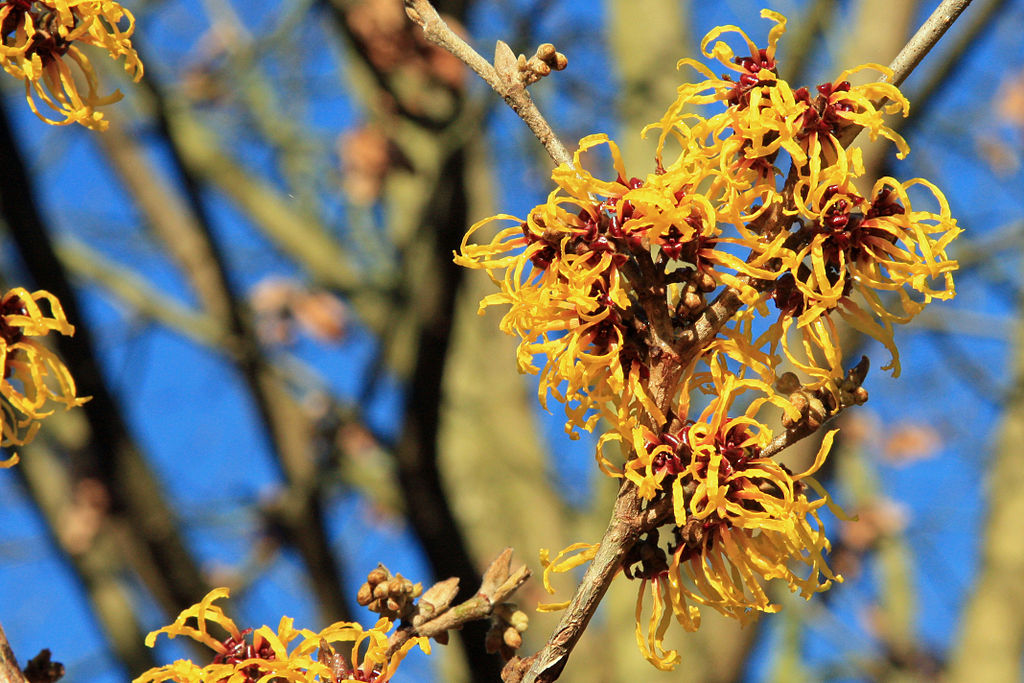Introduction
Fall is an ideal time to tend to your landscape. Raking and disposing of leaves and plant debris can help to reduce the presence of disease pathogens and insects, while increasing the aesthetic beauty of the property. Tree and shrub pruning is a common practice during this period. However, while some plants benefit from fall pruning, it can be detrimental to others. The following examines what plants to avoid pruning during fall, and some recommended practices for when pruning is required.
What Plants Should Not Be Pruned?
1.) Trees and Shrubs That Bloom in Spring
Many plants form their flower buds in summer and fall. Some notable examples include azaleas, camellias, dogwoods, flowering quince, forsythia, lilac, loropetalum, pieris, rhododendrons, saucer and star magnolia, serviceberry, spirea, viburnum, wintering jasmine, as well as several species of cherry, crabapple, peach, and pear.
Pruning these plants in fall can help to maintain their shape and vigor, but it will also reduce the number of flowers available to bloom the following spring. The recommended period for pruning these plants is in late spring or early summer, just after the blooming period has ceased.
2.) Plants That Display Flowers or Fruit in Winter
Various plants produce fruit or flowers during winter. Some of the more common examples include beauty berry, Christmas rose, cotoneaster, cyclamen, lenten roses, multiple species of holly, nandina, snowdrops, wintergreen, and witch hazel. Pruning these plants in fall will result in the majority of the buds being removed. This will inhibit the plants from presenting a full winter display.
3.) Select Varieties of Hydrangeas
Certain hydrangeas require a particular approach to pruning. Macrophylla and quercifolia hydrangea species establish their blooms on old wood. To avoid compromising their floral display in spring, these species of hydrangea should be pruned in mid-summer. Pruning these hydrangeas in spring or fall will result in the removal of the old wood, and the burgeoning flower buds. Panniculata and arborecens hydrangeas produce flowers on new wood. As such, they should be pruned in spring or fall.
When Pruning Is Necessary, Be Wary of Frost Damage
Regardless of the season, sometimes plants require pruning, particularly if they are overgrown, or contain hazardous branches. While pruning can rectify these issues, if performed prior to late October, it may also encourage plants to produce new growth. As the tender growth develops, it can be damaged by sudden frosts, which occur as temperatures plummet. Delaying pruning until plants have entered dormancy will reduce this risk. Plants that are in danger of collapsing – especially large trees – should be promptly felled.
Plants That Benefit from Fall Pruning
Fall pruning can be beneficial to many perennials. These include bearded isis, beebalm, blackberry lily, blanket flower, bronze fennel, catmint, columbine, corydalis, crocosmia, daylily, golden marguerite, goldenstar, ground clematis, hardy begonia, helianthus, hollyhock mallow, Japanese anemone, ligularia, lilyleaf ladybell, masterwort, meadow rue, mountain bluet, painted daisy, penstemon, peony, perennial sunflower, phlox, plume poppy, salvia, sneezeweed, solomon’s seal, veronica, wild indigo, false indigo, and yarrow. Angel’s trumpet, the ‘Annabelle’, ‘Limelight’, and ‘PG’ hydrangea cultivars, butterfly bush, cape plumbago, glossy abelia, junipers, poplar, spruce, sumacs, Bradford and Callory pears, chaste tree, crepe myrtle, gardenia, goldenrain tree, hibiscus, roses, and pomegranate may also be pruned during fall.
General Pruning Recommendations
- Avoid pruning in cool, damp conditions. Many disease pathogens thrive in these conditions, and can readily infect plants that have been recently pruned.
- Employ proper pruning techniques. This will allow plants to compartmentalize the wounds created during the pruning process. Avoid slicing into the bark ridge, or the branch bark collar. Target dead or dying branches first. Then, remove any epicormic sprouts that have formed, while thinning out the center of the crown.
- When pruning a diseased plant, ensure that pruning equipment is sanitized between each cut. Use a solution composed of nine parts water and one part bleach. Dry tools after disinfecting them.
Photo courtesy of RHS Wisley Garden Surrey UK CC-by-SA 3.0


